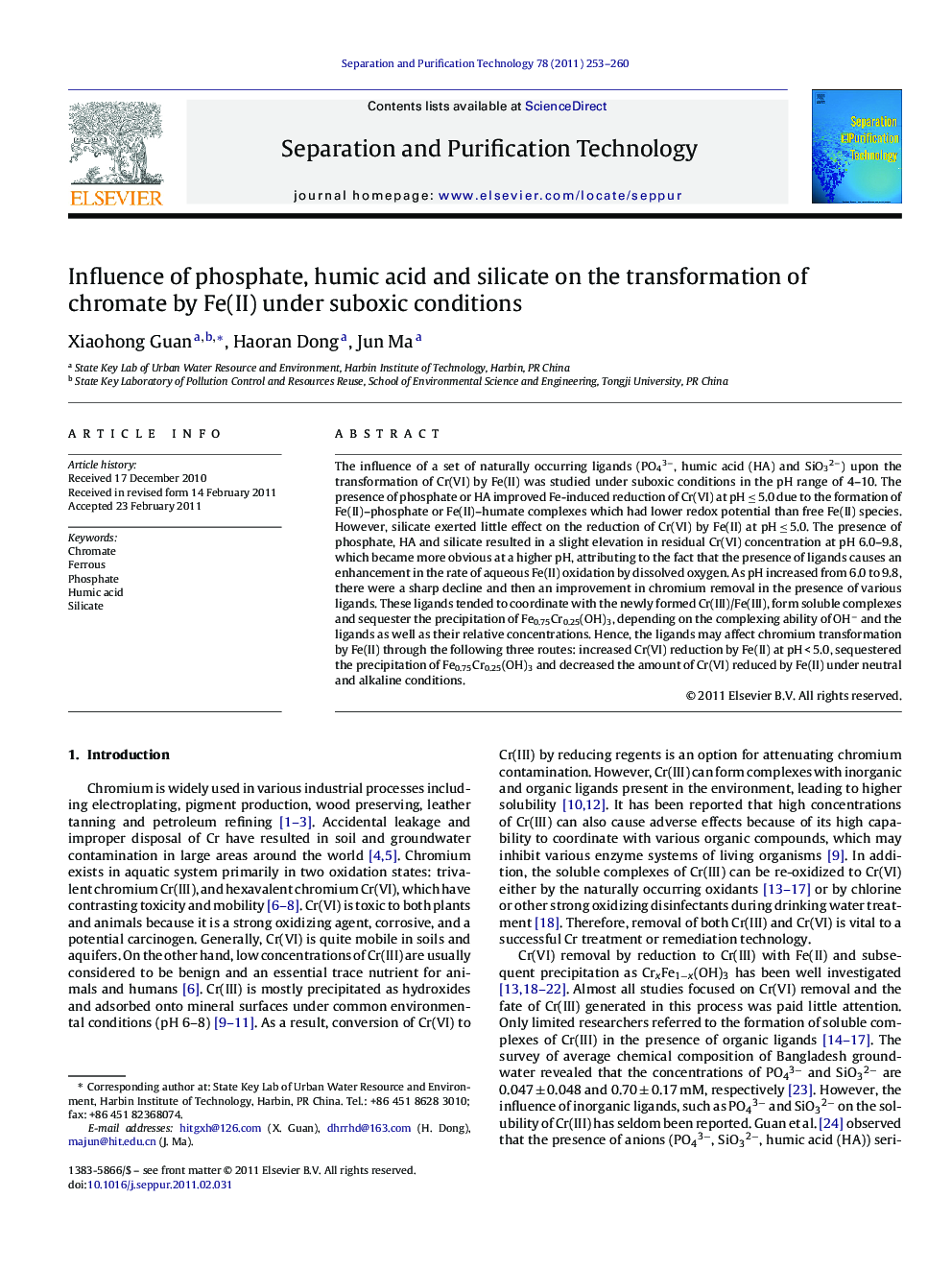| Article ID | Journal | Published Year | Pages | File Type |
|---|---|---|---|---|
| 642643 | Separation and Purification Technology | 2011 | 8 Pages |
The influence of a set of naturally occurring ligands (PO43−, humic acid (HA) and SiO32−) upon the transformation of Cr(VI) by Fe(II) was studied under suboxic conditions in the pH range of 4–10. The presence of phosphate or HA improved Fe-induced reduction of Cr(VI) at pH ≤ 5.0 due to the formation of Fe(II)–phosphate or Fe(II)–humate complexes which had lower redox potential than free Fe(II) species. However, silicate exerted little effect on the reduction of Cr(VI) by Fe(II) at pH ≤ 5.0. The presence of phosphate, HA and silicate resulted in a slight elevation in residual Cr(VI) concentration at pH 6.0–9.8, which became more obvious at a higher pH, attributing to the fact that the presence of ligands causes an enhancement in the rate of aqueous Fe(II) oxidation by dissolved oxygen. As pH increased from 6.0 to 9.8, there were a sharp decline and then an improvement in chromium removal in the presence of various ligands. These ligands tended to coordinate with the newly formed Cr(III)/Fe(III), form soluble complexes and sequester the precipitation of Fe0.75Cr0.25(OH)3, depending on the complexing ability of OH− and the ligands as well as their relative concentrations. Hence, the ligands may affect chromium transformation by Fe(II) through the following three routes: increased Cr(VI) reduction by Fe(II) at pH < 5.0, sequestered the precipitation of Fe0.75Cr0.25(OH)3 and decreased the amount of Cr(VI) reduced by Fe(II) under neutral and alkaline conditions.
Graphical abstractFigure optionsDownload full-size imageDownload as PowerPoint slideHighlights► The presence of phosphate or HA improves Cr(VI) reduction by Fe(II) reduction at pH < 5.0. ► Ligands tend to form soluble complexes with the newly formed Fe(III)/Cr(III) at pH > 6.0. ► The presence of ligands decreases the amount of Cr(VI) reduced by Fe(II) at pH > 6.0.
